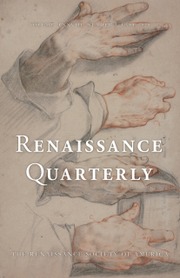In After the Black Death, Mark Bailey seeks to revise the standard narrative of England’s economic and social transformation after the initial outbreak of the plague. In most traditional accounts, mass deaths in the plague broke England out of a Malthusian trap, leading to a swift economic recovery after the initial shock and broadly increased standards of living, with the economy settling into a new equilibrium by the middle of the 1370s. At the same time, discontent stemming from seignorial and royal attempts to crack down on labor mobility and high wages led to the 1381 Peasants’ Revolt, which frightened English elites enough to lead to the decline of serfdom. Though Bailey acknowledges some of the broad strokes of this narrative, he revises important aspects of both the timeline of developments and the smoothness of England’s recovery from the plague.
The Black Death eliminated population pressure as a problem, but Bailey sees the resulting changes in England as much more volatile and uncertain than traditional accounts have assumed. There were important shifts, with grain production decreasing relative to pastoral pursuits, industrial production increasing its share of GDP, and the land market becoming more commercialized and commoditized, but in the moment, these shifts could be difficult for individuals to navigate, and they produced winners and losers, despite standards of living increasing. Events that would be era-defining in other contexts, such as unusually cold and wet weather leading to poor harvests, major outbreaks of livestock disease, and the 1361–62 outbreak of the plague (which itself saw mortality rates in the neighborhood of 10–15 percent) have had a tendency to be minimized in comparison to the Black Death, but these would have caused significant uncertainty and been a continuing drag on some sectors of the economy. In general, Bailey sees the second half of the fourteenth century as turbulent enough that the English economy did not truly enter a new equilibrium until the later 1390s.
Bailey is likewise skeptical of the emphasis that has been placed on the 1381 Revolt in narratives of the decline of English serfdom. As he shows, the necessity of attracting tenants to vacant holdings had already led lords to reduce or eliminate the most onerous servile obligations beginning in the 1350s. So, Bailey sees a desire to end serfdom as only one among several causes of the 1381 Revolt, and characterizes it more generally as expressing a desire that English government and justice operate more fairly and predictably. Bailey pays close particularly close attention to the ways in which local elites (affluent peasants and townsfolk) were able as jurors to co-opt royal attempts to restrict wages and mobility, which paints a more complex picture than that of simple peasant-lord class conflict.
In Bailey’s account, legal culture emerges as perhaps the most visible distinguishing factor in England’s response to the plague. The success of the common law and the adoption of many of its practices and norms in lower courts acted as a check on arbitrary lordly authority, helped underpin the growth of commercial leases of land, and provided a basis for protests against with the subversion of royal justice surrounding labor and prices. For Bailey, this highlights the contingency of post-plague developments; none of these effects were intended results of the development of the common law. That England’s economy recovered and ultimately became more resilient was a result of the shock of the plague and other environmental crises when applied to the institutional arrangements of fourteenth-century England, and was hardly inevitable.
Bailey has made an important contribution both to the scholarship of post-plague English economy and society and to a broader understanding of the developments that led to England’s emergence as an economic powerhouse in the early modern period. Though his conclusions are of broad interest, it is perhaps worth a mild warning that the book is aimed at an audience with some knowledge of medieval English legal and economic history, and technical terminology is not always defined for nonspecialists (e.g., Bailey offers brief explanations of merchet and leyrwite, but not of chevage or copyhold). Nevertheless, this is an impressive achievement that offers a persuasive, nuanced account of post-plague England.


